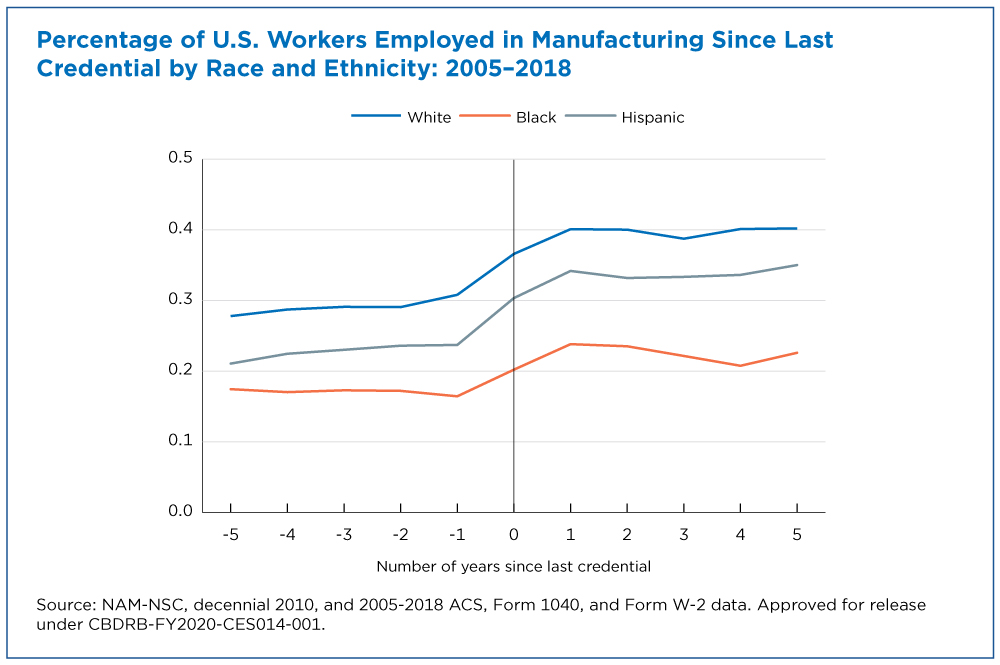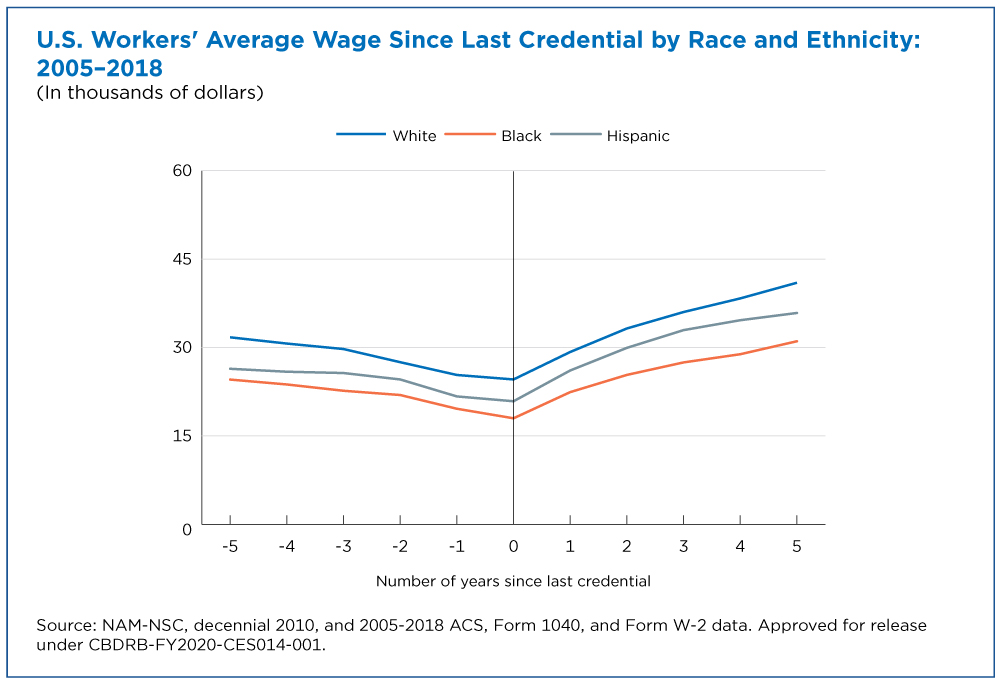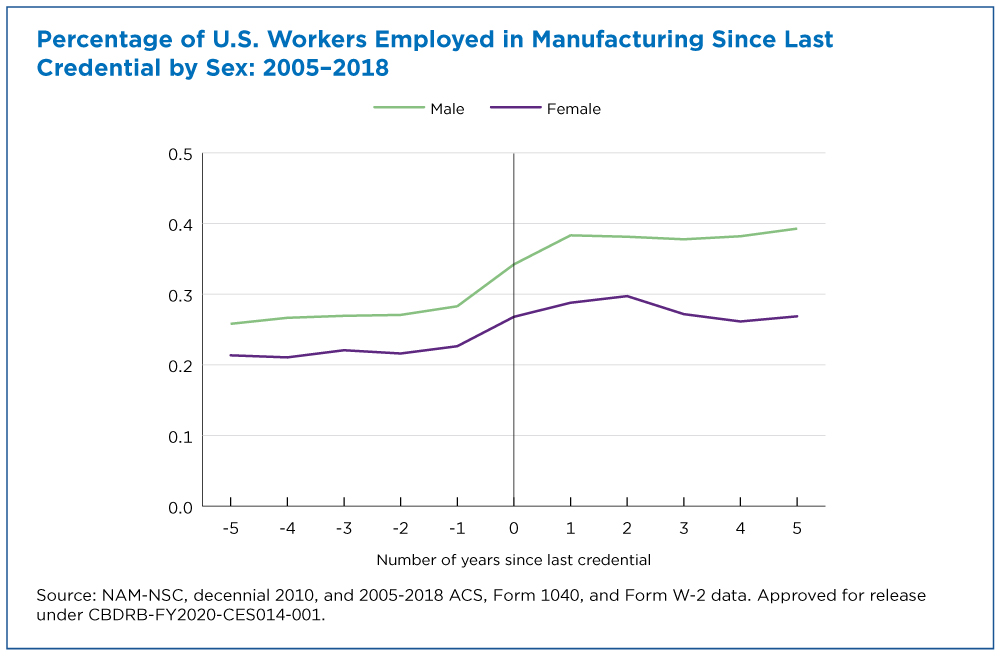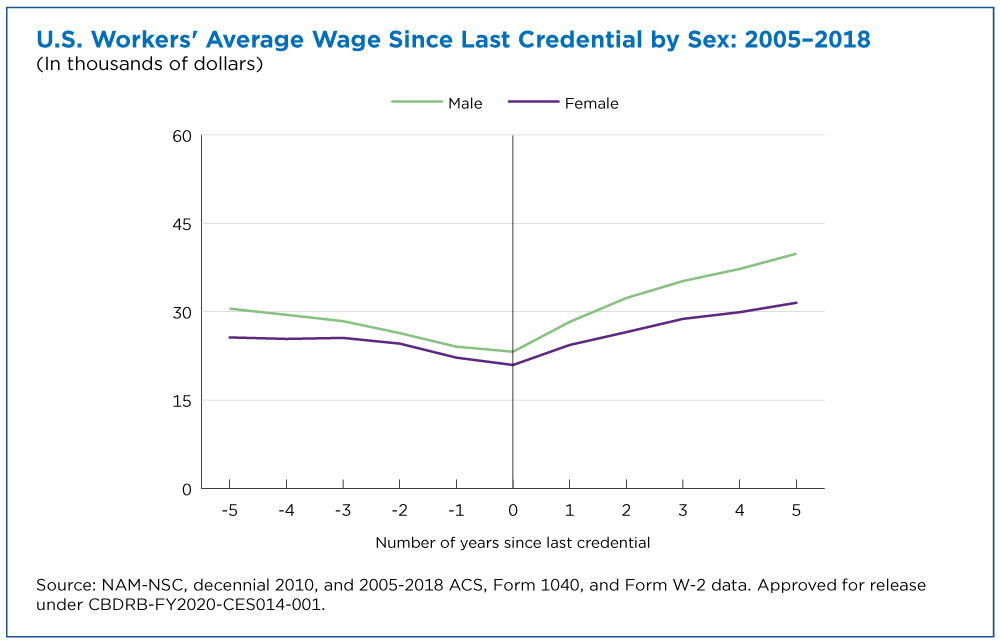
Manufacturing Pay, Job Prospects Increase With Industry Credential
Earning a manufacturing credential may increase your earnings and prospects of getting work in manufacturing even without a college degree, according to new U.S. Census Bureau research conducted in collaboration with the National Association of Manufacturers, Manufacturing Institute and National Student Clearinghouse.
What is a manufacturing credential?
Industry credentials are formal documentations by an industry organization of a participant’s skill attainment. In the case of manufacturing, industry groups provide guidance on which competencies are needed to perform different manufacturing jobs, such as machining or welding.
Manufacturing credentials are typically earned through courses offered at community colleges or on-the-job training, with each type of training culminating in an exam.
Research shows a college degree increases potential earnings. But tuition costs of a four-year postsecondary degree have risen substantially. As a result, some workers seek other, less expensive types of education to gain a leg up in the labor market.
A recent paper — coauthored by Census Bureau researchers Maggie R. Jones, Nikolas Pharris-Ciurej and John Voorheis, Vanessa Brown (formerly with the National Student Clearinghouse) and Gardner Carrick (National Association of Manufacturers) — examines the impact of industry-certified manufacturing credentials on wages and employment in the manufacturing sector.
The findings: Manufacturing workers who earn an industry credential on average earn $2,000 more annually and are more likely to be employed than those who did not earn a credential.
Although manufacturing workers benefited most from industry credentials, we found those in wholesale, retail and other industries also had wage and employment benefits.
Socio-Demographic Differences
The research looked at patterns of wages and employment before and after earning a credential by age, education level, sex, racial/ethnic identity and state of residence.
Most racial and ethnic groups saw increases in both wages and employment in manufacturing after earning a credential.
However, both before and after earning a credential, White workers were more likely to work in manufacturing and have higher wages on average than Black workers.
Similarly, sex disparities persisted even after workers earned a credential: Men were more likely to be employed in manufacturing jobs and have higher wages than women.
The positive wage and employment outcomes could be directly tied to earning credentials increasing skills or providing industry connections to participants. They may also reflect characteristics such as motivation that drive workers to get the credentials in the first place.
How We Measured the Impact of Credentials
We linked participants who earned manufacturing credentials to their post-secondary enrollment and completion records, IRS tax records for wages and employment, the American Community Survey (ACS) and the 2000 and 2010 decennial censuses.
We also compared participants’ labor outcomes to those of a group of workers who were similar but did not earn industry credentials.
This research was made possible through a collaboration and data agreement among the Census Bureau, National Association of Manufacturers, Manufacturing Institute and the National Student Clearinghouse.
This paper covers the results from pilot investigations that focused on manufacturing credentials.
Future work will incorporate credentials awarded in other sectors, such as health care and information technology with the goal of producing a public use data tool.
Article Courtesy of the U.S. Census Bureau



